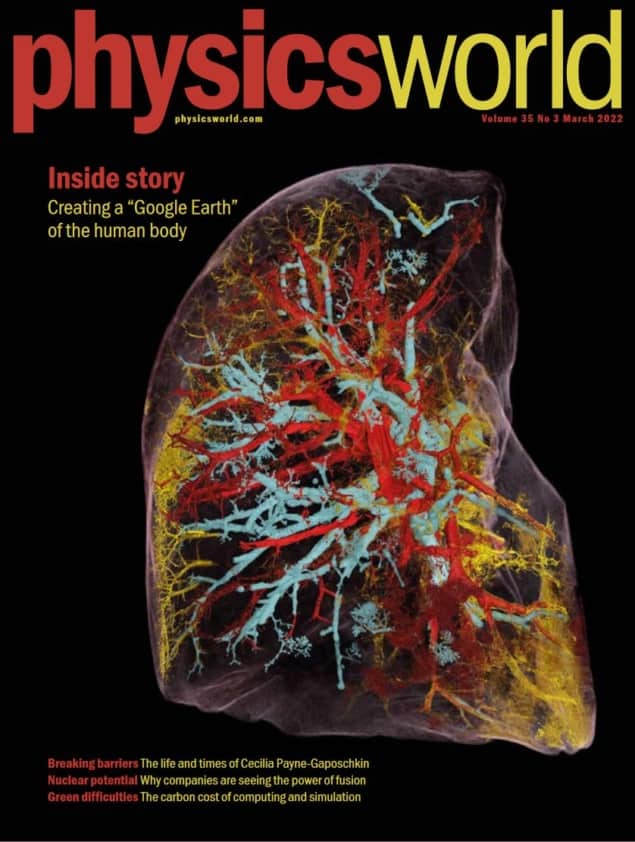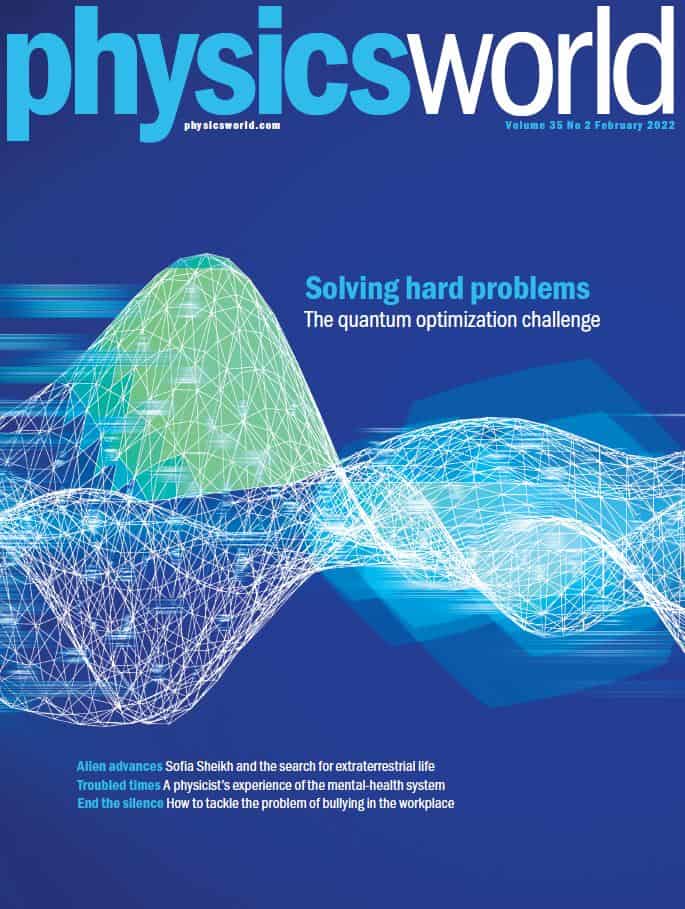Find out about plans for a zoomable “Google Earth” of the human body, the life of pioneering astronomer Cecilia Payne-Gaposchkin and how you can make supercomputing greener

As a service to the physics community, we’re offering you complimentary access to the March 2022 issue of Physics World magazine.
As usual, there’s a great mix of in-depth features, comprehensive news and analysis as well as incisive opinion pieces, careers articles and book reviews.
The cover feature of this free sample issue looks at how physicists are using X-rays to create a zoomable “Google Earth” of the human body.
There’s a great feature about the life of the pioneering astronomer Cecilia Payne-Gaposchkin, who battled sexism and discrimination to succeed.
You can find out how researchers on big-physics experiments are lowering the “carbon footprint” of their supercomputing calculations.
And don’t miss our take on the cultural impact of the Netflix movie Don’t Look Up, see why physics awards need to be as fair as possible, and explore how firms are trying to build commercial fusion reactors.
Remember that if you’re a member of the Institute of Physics, you can read the whole of Physics World magazine every month via our digital apps for iOS, Android and Web browsers. Let us know what you think about the issue on Twitter, Facebook or by e-mailing us at pwld@ioppublishing.org.
For the record, here’s a rundown of what else is in the issue.
• KATRIN sets neutrino mass limit – Björn Lehnert from the Lawrence Berkeley National Laboratory talks to Richard Blaustein about what a new measurement of the upper mass of the neutrino means for particle physics
• JET smashes fusion energy record – The Joint European Torus has achieved 59 megajoules of fusion energy in a single fusion “shot”, more than doubling the previous record. Michael Banks reports
• We need to rethink scientific awards – Jess Wade and Maryam Zaringhalam say that prize processes must be reformed to avoid discrimination
• Fusion: it’s hotting up – James McKenzie applauds recent record investments in commercial fusion power plants, which could help us to create a net-zero economy
• Disaster signalling – Robert P Crease wonders what lessons we can learn from movies about comets and asteroids heading towards Earth

Quantum optimization, alien life and mental health in physics: the February 2022 issue of Physics World magazine is now out
• The body, exposed – A new synchrotron-imaging technique is letting researchers create a “Google Earth” of the human body. Jon Cartwright zooms in
• The woman who found hydrogen in the stars – Sidney Perkowitz delves into the work and life of Cecilia Payne-Gaposchkin, from her stellar astronomical findings to a career-long struggle with bias against women in the early 20th century
• The huge carbon footprint of large-scale computing – Researchers have been able to cut their carbon footprint by jetting off to fewer international conferences, but physicists working on large-scale experiments may also have to consider the significant environmental impact of the computer power they require. Michael Allen investigates
• Technology with characters – Andrew Robinson reviews Kingdom of Characters: a Tale of Language, Obsession and Genius in Modern China by Jing Tsu
• Putting the physics into science fiction – Kate Gardner reviews The EXODUS Incident by Peter Schattschneider
• Industry or academia? – How to choose your path – After doing a PhD and postdoc in
quantum technology, in the UK, Joanna Zajac spent three years in industry before returning to fundamental research. She now works as a quantum scientist at Brookhaven National Laboratory. So how do academia and industry differ and which one is right for you?
• Ask me anything – Careers advice from Maksym Sich, the co-founder and chief executive of quantum-photonics spinout Aegiq
• Conceptual juggling – Laura Hiscott finds out how circus skills can help students to leran physics
